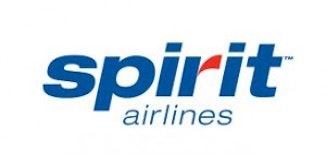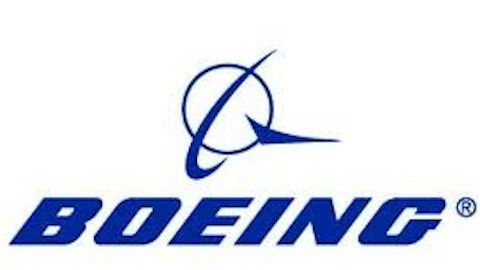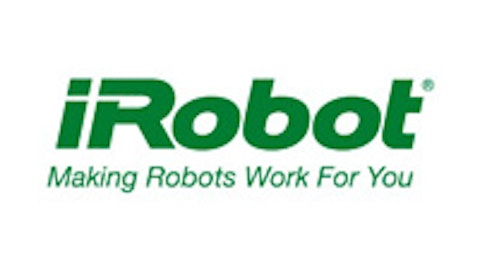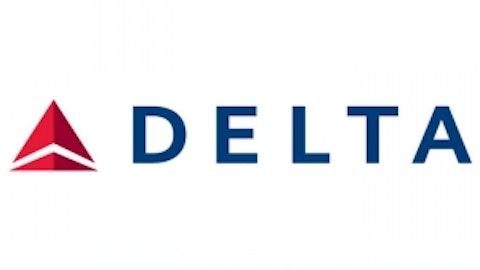
As a result, only two major players in the airline industry remain in the United States – United Continental Holdings Inc (NYSE:UAL) and Delta Air Lines, Inc. (NYSE:DAL). However, for investors who haven’t been paying attention, both stocks have rallied strongly over the past twelve months – United Continental has risen 25% while Delta has surged more than 60%. As the U.S. economy continues on its slow road towards recovery, fuel costs have remained low and airline passenger volume has remained strong.
Although United Continental Holdings Inc (NYSE:UAL) and Delta Air Lines, Inc. (NYSE:DAL) have had a good run over the past year, I’d like to focus on two of the smaller guys in the market – Ryanair Holdings plc (ADR) (NASDAQ:RYAAY) and Spirit Airlines Incorporated (NASDAQ:SAVE) – which have respectively risen 65% and 60% over the past year. Both companies have introduced controversial methods of maintaining their growth, and in this article I will explore the different ways that Ryanair Holdings plc (ADR) (NASDAQ:RYAAY) and Spirit Airlines Incorporated (NASDAQ:SAVE) have been able to squeeze out profits more successfully than their larger rivals.
Fundamentals first
First, let’s take a look at how Ryanair Holdings plc (ADR) (NASDAQ:RYAAY) and Spirit Airlines Incorporated (NASDAQ:SAVE) measure up to their larger rivals on a fundamental basis.
| Forward P/E | Price to Sales (ttm) | Return on Equity (ttm) | Debt to Equity | Profit Margin | Qty. Earnings Growth (y-o-y) | Qty. Revenue Growth (y-o-y) | |
| United Continental | 6.15 | 0.28 | -86.28% | 12,922.34 | -1.86% | N/A (loss) | 1.40% |
| Delta Airlines | 6.01 | 0.42 | 2.43% | N/A (12.99B Debt) | 2.43% | -94.40% | 1.00% |
| Ryanair | 14.88 | 2.27 | 17.31% | 106.90 | 11.66% | 13.00% | -2.90% |
| Spirit Airlines | 12.80 | 1.71 | 20.91% | No debt | 8.33% | 30.50% | 22.90% |
| Advantage | Delta | United | Spirit | Spirit | Ryanair | Spirit | Spirit |
Source: Yahoo Finance, 6/21/2013
Ryanair and Spirit’s wide profit margins, double-digit earnings growth and robust return on equity are all a stark contrast to the anemic single-digit and negative figures reported by United Continental Holdings Inc (NYSE:UAL) and Delta Air Lines, Inc. (NYSE:DAL). Although United Continental and Delta are far cheaper based on P/E and P/S valuations, their other valuations indicate very little upside from current prices.
The art of ancillary fees
Spirit Airlines Incorporated (NASDAQ:SAVE) and Ryanair Holdings plc (ADR) (NASDAQ:RYAAY) are both discount airlines that sell very cheap flights in America and Europe, respectively. Some base tickets cost as cheap as $30-$40, making them the first stop for cash-strapped travelers. However, Spirit and Ryanair have perfected the art of ancillary fees – those extra charges for luggage, check-ins, drinks, beverages and other services.
Ryanair Holdings plc (ADR) (NASDAQ:RYAAY) is notorious for piling on these charges, charging extra fees for printing boarding passes ($108), online bookings ($15) and checking in bags ($46 each). Spirit Airlines Incorporated (NASDAQ:SAVE) charges $35 online for additional carry-on luggage, $50 for checked luggage checked at the counter, and $100 for luggage checked at the gate. Spirit Airlines even charges a controversial “passenger usage fee” for online purchases, which charges $9 to $17 for all tickets not directly purchased at airline counters. Both airlines charge extra for in-flight beverages and food.
These ancillary fees accounted for 21.8% and 38.5% of Ryanair Holdings plc (ADR) (NASDAQ:RYAAY) and Spirit Airlines Incorporated (NASDAQ:SAVE)’s top line in 2012, respectively. Spirit ranks first in the industry for ancillary fees as a percentage of overall revenue, according to a recent report from IdeaWorksCompany. While these charges are incredibly unpopular with many travelers, including singer Brian McFadden, who openly picked a fight with Ryanair earlier this month over its fees, it’s a business model that produces some incredible profit margins in an otherwise low-profit industry.
Squeezing out every last seat
Spirit and Ryanair are also much more cramped than their full-priced rivals. Spirit’s Airbus A320 has 178 seats squeezed in, compared to 150 on JetBlue’s A320. Ryanair’s squeezes even more passengers in its A320neo, with 180 seats.
Ryanair CEO Michael O’Leary has made several attempts to squeeze out every last available seat on his aircraft, often with comical results. O’Leary intends to remove two of the three toilets on all of his aircraft in an attempt to cram in more seats. At one point, he suggested that the single remaining toilet would be a pay toilet, at one euro or pound per use, but that plan was scrapped after a public outcry.
However, that didn’t stop O’Leary from attempting to introduce vertical standing seats on his aircraft, campaigning against seat belts, and calling his customers “stupid” for not printing out their boarding passes in advance.
The latest episode in O’Leary’s headline-grabbing antics was a conflict with The Boeing Company (NYSE:BA). O’Leary was reportedly upset with Boeing for not complying with his requests for fewer toilets and more seats. The Boeing Company (NYSE:BA)’s 737 currently has 189 seats. O’Leary demanded that The Boeing Company (NYSE:BA) remove a couple of toilets and stick in six extra seats for his ideal seating capacity of 195, which Boeing rejected due to “regulatory issues, licensing issues, emergency evacuation issues, (and other) technical issues” that O’Leary admitted that he didn’t “really understand.”
Despite these controversial tactics, Ryanair Holdings plc (ADR) (NASDAQ:RYAAY) currently carries the most international passengers in the world, at 79.6 million, surpassing second-place Lufthansa at 50.8 million. O’Leary claims that number could rise to 100 million by 2019, when its fleet is forecast to reach 400 aircraft.
You get what you pay for
Although Spirit Airlines Incorporated (NASDAQ:SAVE) and Ryanair Holdings plc (ADR) (NASDAQ:RYAAY) are loathed by some travelers, travelers continue to fly with these discount airlines for a cheap, no-frills experience. As a result, they have evolved into better long-term investments than traditional airlines.
In the world of airlines, it might be prudent to follow a simple rule – invest in the airlines you would never fly with, and fly with the airlines that you would never invest in. This might save you a lot of grief in the skies and in your portfolio later on.
The article Is It Time to Invest in Discount Airlines? originally appeared on Fool.com and is written by Leo Sun.
Leo Sun has no position in any stocks mentioned. The Motley Fool owns shares of SPIRIT AIRLINES INC. Leo is a member of The Motley Fool Blog Network — entries represent the personal opinion of the blogger and are not formally edited.
Copyright © 1995 – 2013 The Motley Fool, LLC. All rights reserved. The Motley Fool has a disclosure policy.





